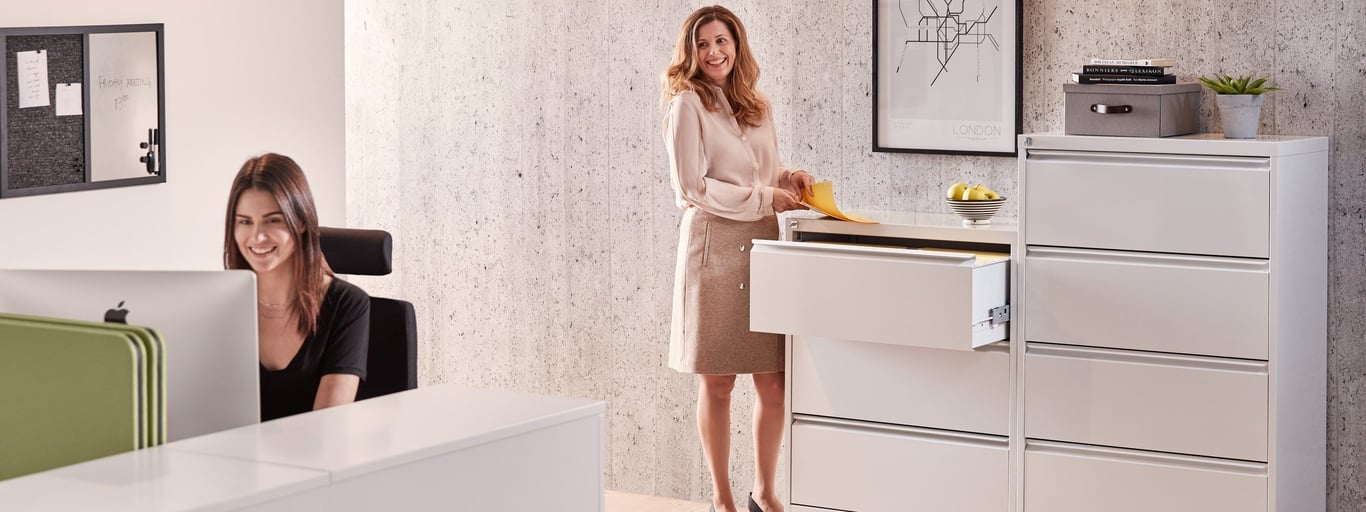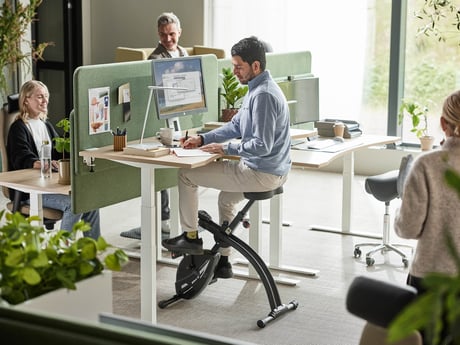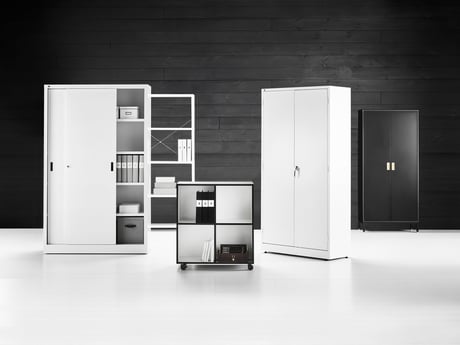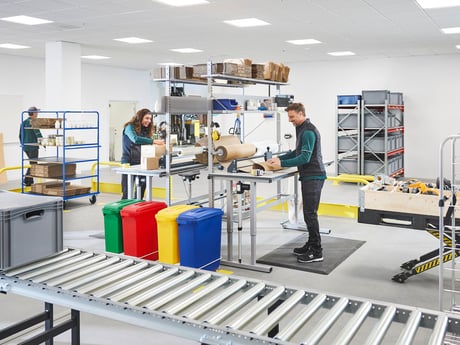- AJ Products UK
- Blog: Tips to Inspire Happiness at Work
- Tips & trends
- Keeping Hard Copy Documents Safe

Keep Your Business Safe: How to Protect Paper Documents from Data Breaches
When we hear about a data breach, our minds often jump to high-tech cyberattacks - hackers in hoodies stealing digital files. But the reality in the UK is far more mundane and often hits closer to home. Official data reveals that the majority of data breaches aren't cyberattacks at all. In fact, as of Q1 2024, a whopping 73% of reported incidents were categorised as 'non-cyber'. This surprising figure includes things like stolen paper files, but the most common cause is something many of us have done: accidentally sending an email to the wrong person. It's a reminder that sometimes the biggest risks aren't from malicious hackers, but from simple human error.
So, how can organisations keep sensitive information safe in the workplace? From locked wood storage cabinets, to shredding policies, there are practical steps every business can take to protect themselves.
Understanding the Risks
The theft of various documents can pose different threats to a business, depending on the information they contain. The risks can be grouped into four main categories:
- Operational risk: when stolen information disrupts day-to-day activities.
- Financial risk: when it compromises revenue or assets.
- Reputation risk: when disclosure damages trust and brand image.
- Physical risk: when data could endanger staff safety.
Reduce Paper Where Possible
Perhaps the most effective way of ensuring paper documents are not stolen is to avoid creating them in the first place. Organisations should avoid creating hard copies of documents that contain sensitive information. If documents are being stored on the cloud, the organisation should ensure that they are properly encrypted and secure.
Secure Printing Practices
A common risk comes from employees forgetting to collect their documents from shared printers. The information can be seen by anyone who happens to come across the documents. Secure print solutions, where authentication is required before documents are released, help to ensure that only the intended person can collect the printout.
Lock it Away
Sensitive paper documents should be placed in an area or a room that can be locked when it is unoccupied. Instead of leaving hard copies lying around, businesses should invest in secure storage cabinets. Steel storage cabinets can be used to store important materials. These cabinets may also provide a degree of protection against fire.
Dispose of Documents Properly
When it’s time to get rid of documents, simply throwing them in the bin isn’t enough. Shredders and confidential waste bins are essential for securely disposing of sensitive papers. AJ Products offers secure storage and waste solutions in the UK to help businesses manage their documents safely.



